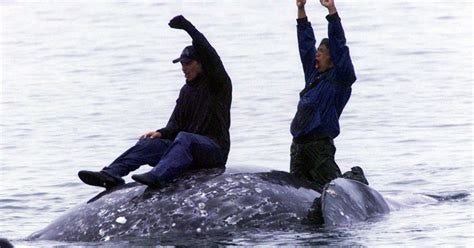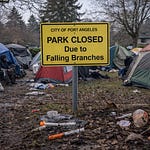Local tribes and an NGO are exploring a costly and disruptive replacement of the Hood Canal Bridge—not because it’s failing, but because of concerns that it may confuse migrating salmon. The project, still in early stages, is backed by NOAA and tribal partners like the Jamestown S’Klallam, raising questions about priorities, influence, and who’s really footing the bill in a state already struggling to maintain basic infrastructure. Is this about fish—or something bigger?
In a region struggling to maintain its roads, Washington may be heading toward one of the most expensive—and controversial—transportation projects in state history: the full-scale replacement of the Hood Canal Bridge.
The bridge, which connects Clallam and Jefferson counties to Kitsap County via State Route 104, underwent a major $471 million overhaul in 2009. That project closed the bridge for five weeks, replacing pontoons, transition spans, and a central draw span. Many residents still remember the disruptions.
Now, there’s a new push to replace the bridge entirely. The reason? Salmon.
According to a study led by NOAA (the National Oceanic and Atmospheric Administration), the bridge’s pontoons create a 15-foot barrier that spans 83% of the waterway beneath it.
Tagged steelhead tracked by NOAA showed that as many as half of those that made it to the bridge never passed it. The prevailing theory is that the structure confuses the fish—and may be helping harbor seals hunt them more easily.

The assessment effort is being facilitated by Long Live The Kings (LLTK), a regional nongovernmental organization (NGO) dedicated to salmon recovery, and includes input from Clallam County, the Lower Elwha Klallam and Jamestown S’Klallam Tribes, and other stakeholders.
LLTK project manager Shaara Ainsley offered an example: a juvenile steelhead tagged during the study swam the entire length of the bridge twice trying to find a passage through—an exhausting journey for a six-inch fish during a migration that can range from 300 to over 1,000 miles.
The recommendation? A new, fish-friendly bridge design—possibly modeled after a Norwegian concept that hasn’t yet been built.
The proposed structure would allow for ship clearance and feature widely spaced pillars to let fish pass through more easily. No cost estimates or funding plans have been released. WSDOT says it does not currently have funds allocated for the project.
Some local residents and taxpayers are beginning to ask whether now is the right time to take on such a massive, speculative endeavor—especially in a state already facing challenges maintaining existing infrastructure.
Adding to the complexity are the close partnerships between federal agencies and tribal governments. NOAA, for example, has collaborated extensively with the Jamestown S’Klallam Tribe on aquaculture development, including joint commercial pen-fish farm initiatives.
The two are also partnering to promote tribal involvement in environmental science programs, and NOAA recently issued a marine mammal hunting waiver to the Makah Tribe for cultural and subsistence whaling.
None of this is inherently problematic—but it does raise questions about influence and funding priorities. With tribes playing a central role in shaping projects like this one, some wonder whether the financial burden is being shared fairly.
Unlike counties and cities, tribal governments generally don’t pay the same state taxes. On fuel sales, for instance, tribes retain 75% of gas tax revenue—money that would otherwise fund highway and bridge maintenance. That arrangement, while legal under state-tribal compacts, complicates the broader debate about who benefits from and who pays for transportation infrastructure.
The idea of improving fish passage isn’t new—Washington is already under a court mandate to remove hundreds of fish-blocking culverts across the state, a project expected to cost nearly $8 billion. But combining that effort with large-scale transportation redesigns like the Hood Canal Bridge replacement may stretch both the budget and the public’s trust.
In the end, the question may not be whether salmon deserve help—they do—but whether this is the most effective or equitable way to do it.
For now, the idea remains in its early design and discussion phase. But given the scale and cost that such a project could entail, it’s worth keeping a close eye on who’s at the table—and who’s expected to foot the bill.
Watch the Long Live the Kings presentation by clicking here and advancing to 5:00.


















